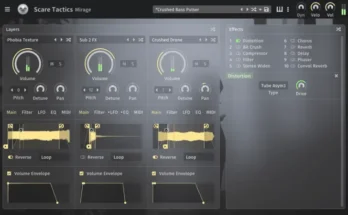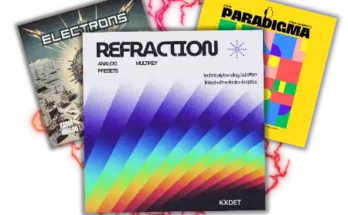SupaSaw for Korg Minilogue XD
Presets | 463 Kb
In early 1997, Roland introduced a cult synthesizer, that was seen as a modern digital incarnation of the classic analog Jupiter-8 from 1981. Offering a very intuitive interface with 40 knobs and sliders, and a large breadth of sounds, it soon became a classic itself as it was used by The Prodigy, Nicky Romero, Depeche Mode, Gary Numan, BT, Paul Van Dyk, Faithless, Dash Berlin, Pet Shop Boys, The Crystal Method, Orbital, Ken Ishii, Vince Clarke, Goldie, Dave Holmes, Groove Armada, ATB, Überzone, Ferry Corsten, Scooter, Konflict, William Orbit and Garbage.
Though it was a virtual analog—or analog modeling—synthesizer, it was digital at heart, with a lot of grit that made it perfect for all styles of electronic music. But there is a more specific reason why it became so famous and appreciated: the first of its two oscillators offered a revolutionary brand new mode, named Super Saw. Instead of the classic sawtooth, square and triangle waveforms, the oscillator would generate seven detuned sawtooth waves played at the same time on each of the voices. It allowed the creation of both harsh “fat” leads when used raw, and smooth “creamy” pads when filtered, and it quickly became the defining sound of the trance genre, and a staple of electro, techno, drum’n’bass and house.
How it became difficult to access
In these days of digital abundance, one couldn’t be blamed for thinking it must be easy to use it in compositions and live sessions. However this cult synthesizer is no more on sale, and it is considered that nothing sounds close to the inimitable Super Saw oscillator. Much more than a static waveform that could simply be sampled, it has two dedicated parameters, each controlled by a slider, that can interact and drastically change its sound in a very characteristic way.
Detune controls how much each of the six oscillators is detuned both lower and higher from the central oscillator that remains fixed at the root frequency that corresponds to the note being played. When set to zero, all seven oscillators have the same frequency. At the maximum value, three oscillators are detuned to frequencies at different distances above the central frequency, and three other oscillators to frequencies below the central frequency, in a quite symmetrical way.
Mix controls the volume of the six detuned oscillators relative to the central oscillator. When set to zero, the detuned oscillators can barely be heard, but still very slightly. When set to the maximum, each of them becomes actually louder than the central oscillator.
Roland included the very same sound engine on the rack version of their cult synthesizer, but when they added the Super Saw to newer instruments, it was quite different. While the Detune and Mix controls sound fairly the same, the waveshape is visibly different as our oscilloscope tests have shown with a V-Synth XT, even with both Detune and Mix set to zero. Later, other manufacturers and virtual instrument developers have tried to create a similar oscillator, like the Virus TI HyperSaw, but feedback shows that they’re further from the original and that the Super Saw remains unmatched… until today.
Please REPORT in Comment Broken Links




